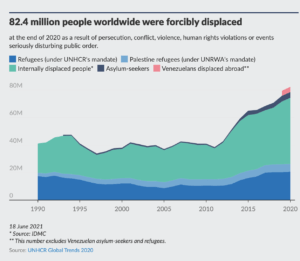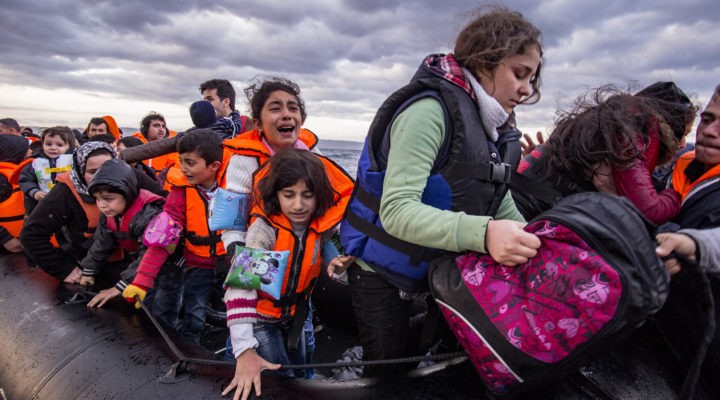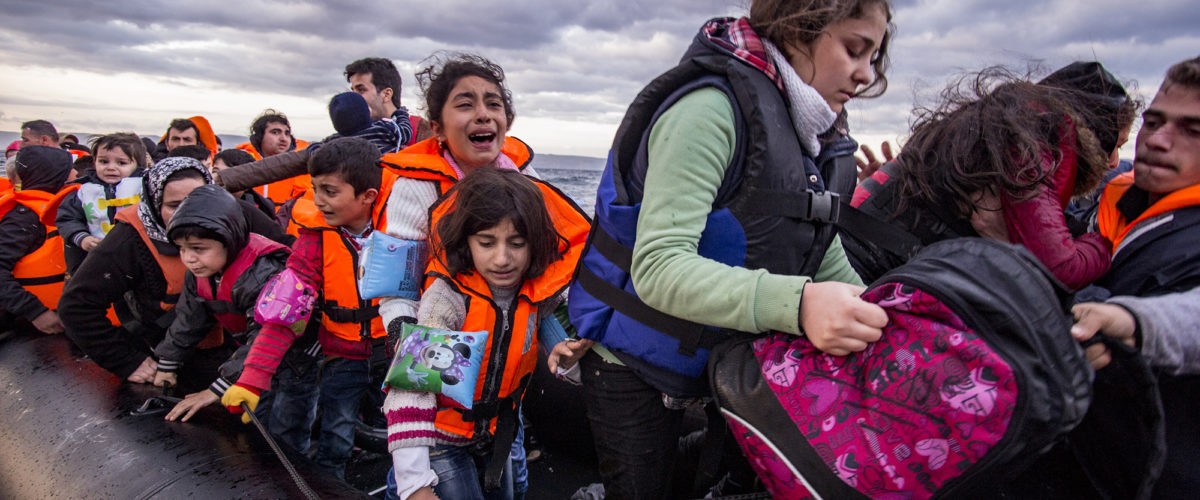Just as advocates expected, raising the annual refugee cap for 2021 by the Biden administration is proving a challenge to domestic resettlement agencies and overseas candidate screening centers that atrophied from underuse during the Trump presidency.
According to newly released figures from the U.S. State Department, 6,246 refugees from around the world so far have been resettled in the current fiscal year that will end Sept. 30. At the urging of faith-based and other resettlement groups, Biden set the maximum level for this year at 62,500, well above the 15,000-refugee limit Trump had approved for 2021. By comparison, President Barack Obama authorized admission of up to 85,000 refugees during his final year in office and fell only five short in actual admissions.
But the federal numbers indicate — as expected — that arrivals this year will fall well short of Biden’s target, with 377 refugees resettled in February, 283 in March, 272 in April, 915 in May, 1,530 in June and 1,463 in July. In the first part of the fiscal year up to January, while Trump remained president, a total of only 1,403 refugees were resettled in the U.S., including only one in October.
The data do show positive signs despite representing historic lows, said Krish O’Mara Vignarajah, president of Lutheran Immigration and Refugee Service.

Krish O’Mara Vignarajah
“In some ways, these figures represent progress. There is a significant upward trend in recent months, indicating that the administration’s efforts are making an impact,” said Vignarajah, whose agency is a major U.S. refugee resettlement partner. “However, admissions remain tragically and historically low compared to America’s capacity to welcome and the urgent need of millions of families across the globe.”
The precipitous drop in refugee admissions began with Trump, who limited the ceiling for new arrivals to 50,000 in 2017, 45,000 in 2018, 30,000 in 2019, 18,000 in 2020 and 15,000 this year. A study by the Migration Policy Institute showed that actual admissions fell below even those historically low targets. The Trump administration in principle opposed even legal immigration as part of its “America first” doctrine.
Refugee resettlement agencies, including evangelicals and other faith-based groups, expressed hope after the 2020 presidential election that the Biden administration would restore the nation’s historic role in welcoming refugees.
But ramping up to pre-Trump admissions levels continues to be slow-going for a national and international resettlement infrastructure depleted by four years of declining admissions that forced layoffs and, in some cases, even closures of offices, said Ali Al Sudani, senior vice president for programs and chief of staff at Interfaith Ministries for Greater Houston.
In addition to hiring and training additional employees and opening new offices, agencies also must hustle to reconnect with local employers, landlords and organizations that assist refugees in acclimating to American society, Al Sudani said.
Faced with record-low numbers of newcomers, Interfaith Ministries for Greater Houston during the Trump years switched gears to provide additional services for refugees already living in the region. Those included career advancement, social services and case management, he said.

Ali Al Sudani
But the Houston area already has seen incremental increases — growing from zero refugees arriving in January and February to eight in May, 10 in June and 17 in July. “We are also starting to see the Afghan special immigrant visa holders who were interpreters for U.S. forces,” Al Sudani said.
This measured growth is a pace the agency can handle as it rebuilds capacity, he said. “To start a new office and reestablish, it takes time.”
It also will take time to rebuild the federally funded and extensive vetting process refugees undergo before entering the U.S., he added. “Right now, there aren’t adequate personnel in overseas processing centers to conduct interviews, background checks and medical checks. Each one of these checks is only valid for a few months and if there is a delay, for whatever reason, then your screening expires and you have to do it all over again.”
And delays for refugees being processed translates into bigger caseloads for under-staffed screening centers, Al Sudani said. “Whenever there is a halt in the process, it means all these checks have to be conducted again, and that means another backlog, and that means more delays.”
Currently, there is a backlog of more than 1.1 million refugees awaiting entry to the United States, the State Department told Congress in a 2021 report.
 Worldwide, there are many more refugees than that awaiting haven in host nations. Of the 82.4 million people who are forcibly displaced, 26.4 million are refugees, the United Nations reported.
Worldwide, there are many more refugees than that awaiting haven in host nations. Of the 82.4 million people who are forcibly displaced, 26.4 million are refugees, the United Nations reported.
The Democratic Republic of Congo was the leading country of origin among the refugees who have entered the U.S. in fiscal year 2021, with 2,783, federal data showed. That was followed by 687 refugees arriving from the Ukraine, 494 from Afghanistan, 415 from Burma and 414 from Syria.
Vignarajah said the need for action remains urgent.
“Given the humanitarian imperative, especially in conflict zones like Afghanistan, we simply have to do better,” she said. “While the challenges are numerous, it is critical that the administration take all necessary steps to restore the program to its full capacity. Otherwise, President Biden’s promise to welcome 125,000 refugees in Fiscal Year 2022 will remain out of reach.”
Related articles:
Refugee resettlement expected to rebound, but the pipeline is broken
Here’s one simple reason to support refugee resettlement | Opinion by Allison Lanza
Faith leaders express joy as Biden finally raises ceiling for refugee admissions to 62,500


